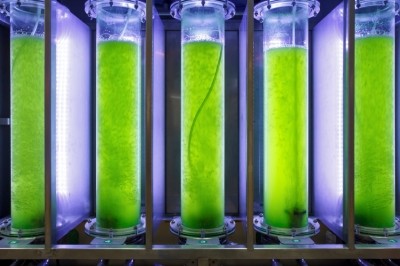High NDI failure rate putting more emphasis on GRAS status for new ingredients

The recent White House budget request for the Food and Drug Administration puts stark parameters on the problem. In the narrative portion of the request broken down by agency activity, the document states that in FY 2014 FDA received 76 NDI notifications, of which it objected to 67, a failure rate of 88%. That raw number included no additional detail; in other words, it is not known how many of the 67 failures were the result of obvious errors and how much is due to the precise characterization and high levels of proof of safety the agency seems to be demanding. The budget document did say that the agency intends to reissue the NDI draft guidance this year in a form that will include more detail on what the agency expects in a NDI submission.
In the interim, many companies are looking at ways to come to market legally with new ingredients without having to run the NDI gantlet. Some are relying on what might be called an expansive view of what being “on the market as an item in food” means in the grandfather clause of DSHEA.
Others are leaning on the GRAS mention in the original draft version of the NDI guidance issued in 2010. The guidance states that a notification for a NDI is not required if if the ingredient is listed or affirmed by the FDA as GRAS, is self-affirmed as GRAS, or is approved as a direct food additive in the US as long as it has been used in the food supply and is to be used as an NDI without chemical alteration.
What’s safe, and who decides?
In both cases—NDIs and GRAS substances—the issue revolves around the safety of the ingredient. The difference, said Jason Sapsin, an attorney in the firm Fox Rothschild who has also done a stint at FDA, is a proper understanding of what “generally recognized” means.
“It means there is a consensus in the scientific community that the ingredient is safe,” Sapsin told NutraIngredients-USA. “For that, the data you bring forward has to be public so that this consensus might reasonably develop.”
GRAS comes in two flavors: self affirmed, in which a company convenes its own panel of experts to assess the ingredient’s safety, and so-called “FDA no objection” status in which the dossier is submitted to the agency. Sapsin said it’s important to keep in mind the distinction between the two.
“When you self affirm and you don’t send it into the agency you are betting that if the agency asked to see your material they would agree with you. You are not establishing the agency’s position on it, you are establishing your own position on it. If you have done a good job it might not be an issue, and the agency might have no choice but to agree, thought the agency doesn’t really offer an opinion, they just agree not to object to your conclusion,” Sapsin said.
“In GRAS you are saying everybody else has decided this is reasonably certain to be safe. In an NDI you are saying that I have decided this reasonably expected to be safe and the data I am using to show that might or might not be public,” Sapsin said.
GRAS solely as a workaround
Sapsin said the issue becomes murkier for GRAS notifications that seem to be undertaken solely as a legal basis to bring a new dietary supplement ingredient to market. A key question in these cases is at what dose the supplement application would be considered safe. GRAS dossiers are supposed to be specific to the food matrix in which the ingredient will appear to take into account the likely number of daily servings.
“That’s not the end of the story. While the product may be GRAS, the intake level of the NDI may or may not be the same as to how the product has been recognized as GRAS in the food supply,” Sapsin said.
Murkier still is the question of ingredients that have GRAS status, either self-affirmed or no objection, to which FDA has subsequently objected in NDI notifications. There have been at least two instances of this situation over the past year or so, and both ingredients are on the market. How can an ingredient be theoretically safe in a food and not in a supplement? What accounts for the situation that seems to be developing in which NDIs have to clear a higher bar of safety than that required for GRAS ingredients, when the language of the relevant statutes might seem to indicate otherwise?
Pushing the envelope
In Sapsin’s view this relates to the more experimental, cutting-edge nature of dietary supplement development, and the very nature of dietary supplements themselves, existing as they do in a realm somewhere between food and pharmaceuticals.
“I think part of that has to do with the fact that people are constantly trying to push the envelope on NDIs. That could why that standard seems to be higher. It could be that NDI notifications are filed on marginal kinds of products,” Sapsin said.
“We keep forgetting the tradeoff that was made when the dietary supplement category was created. The tradeoff was always along the following lines: The law will allow you to make certain kinds of claims on what is essentially a food product that ordinarily would be impossible. The stuff for which you make those claims should be ‘organic’ and food-like,” Sapsin said.
While the new NDI draft guidance might bring some clarity to the picture when it is finally released, it is unlikely to relieve the tension that the processes of chemical synthesis and so-called ‘synthetic biology’ used to create new forms of ingredients are placing on the system.
“The starting point was that the ingredient existed in nature and usually from where it was in the food supply. The purpose was not to go into the lab and cook up a new molecule. When you start doing that, you are trying to fit your product into a structure for which it was not intended,” Sapsin said.









